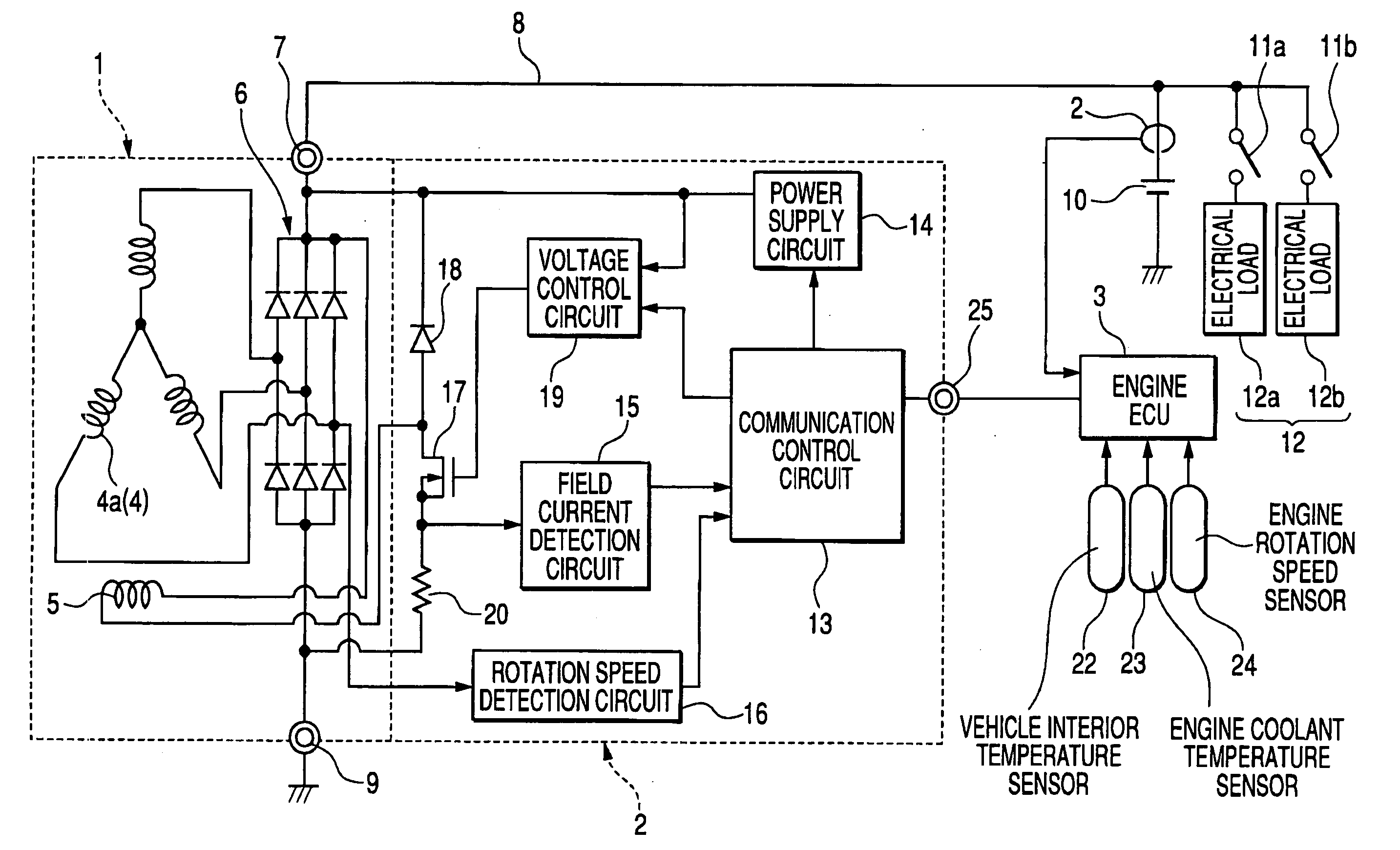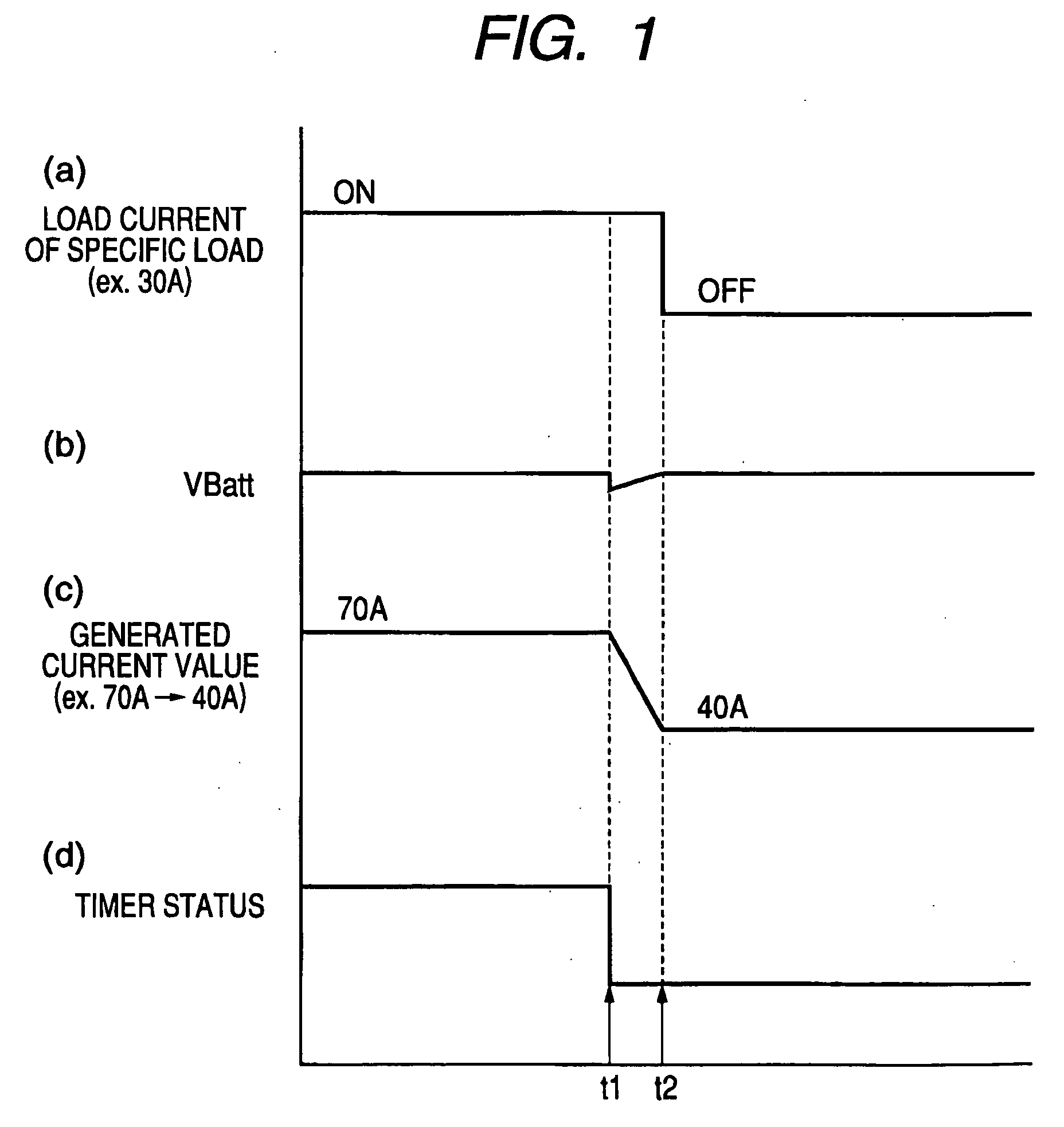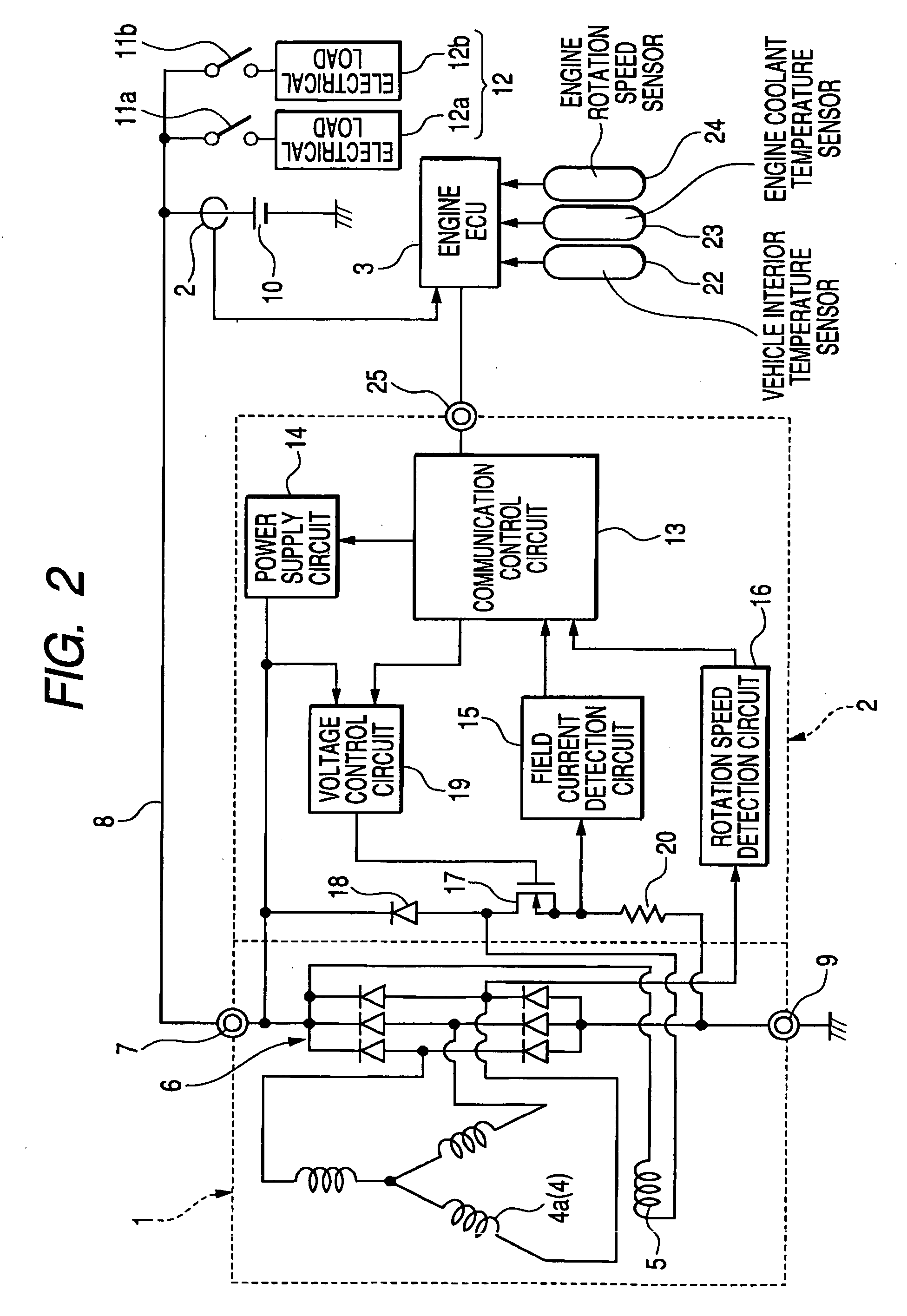Vehicle-mounted electrical generator control system enabling suppression of supply voltage spikes that result from disconnecting electrical loads
a technology of electrical generators and control systems, applied in the control of electric generators, electric devices, transportation and packaging, etc., can solve problems such as voltage spikes of significant amplitude, and affecting the operation of electrical generators
- Summary
- Abstract
- Description
- Claims
- Application Information
AI Technical Summary
Benefits of technology
Problems solved by technology
Method used
Image
Examples
first embodiment
[0033]FIG. 1 is a timing diagram for use in describing the operation of a first embodiment of a vehicle generator control system. FIG. 2 is a general system block diagram of this embodiment, which is constituted as a combination of a regulator 2 and an engine ECU 3. The regulator 2 controls the output voltage of an electrical generator 1 (referred to in the following simply as the generator 1) formed of a 3-phase alternator having Y-configuration phase windings 4 and a field winding 5 that is driven for rotation by the vehicle engine (not shown in the drawings) to produce a rotating magnetic field, and a full-wave rectifier 6 which rectifies the 3-phase output voltages of the phase windings 4, to supply a positive DC output voltage supplied via a B terminal 7 to a power supply lead 8. The negative-voltage side of the rectifier circuit 6 is connected via an E terminal 9 to the vehicle ground potential.
[0034] The AC voltage of a phase winding 4a is detected for use in detecting the s...
second embodiment
[0060] With the first embodiment, during operation in the generated output restraint mode described above, a target value of generated output current from the generator 1 is calculated by subtracting the load current of the specific electrical load 12a from the value of output current that is being generated by the generator 1 at the pre-disconnection time point. That is to say, it is assumed not only that the same respective levels of load current will continue to be supplied to each of the electrical loads other than the load 12a, after the disconnection of load 12a, but also that substantially the same level of charge current is to be drawn by the battery 10. However it is possible that for example prior to disconnection of the specific electrical load, the battery 10 is at a low state of charge, but that the maximum level of output of the generator 1 at that time is insufficient to supply all of the electrical loads while also supplying a sufficient level of charging current to ...
third embodiment
[0067] In the prior art, when the battery 10 is fully charged or is close to the fully charged condition, then disconnection of an electrical load from the generating output voltage will result in a substantial voltage spike as described above referring to FIG. 4. This is due to the fact that when the battery 10 is close to being fully charged, with the output voltage of the generator 1 being higher than the internal voltage of the battery 10, any increase in the output voltage of the generator 1 will not result in a significant increase in charging current that is drawn by the battery 10. However if the battery 10 is in a low state of charge, then an increase in the output voltage of the generator 1 will cause a significant increase in the level of charging current. Hence, if an electrical load is disconnected from the output voltage of the generator 1 when the battery 10 is in a low state of charge, although the level of that output voltage will tend to immediately increase, this ...
PUM
 Login to View More
Login to View More Abstract
Description
Claims
Application Information
 Login to View More
Login to View More - R&D
- Intellectual Property
- Life Sciences
- Materials
- Tech Scout
- Unparalleled Data Quality
- Higher Quality Content
- 60% Fewer Hallucinations
Browse by: Latest US Patents, China's latest patents, Technical Efficacy Thesaurus, Application Domain, Technology Topic, Popular Technical Reports.
© 2025 PatSnap. All rights reserved.Legal|Privacy policy|Modern Slavery Act Transparency Statement|Sitemap|About US| Contact US: help@patsnap.com



